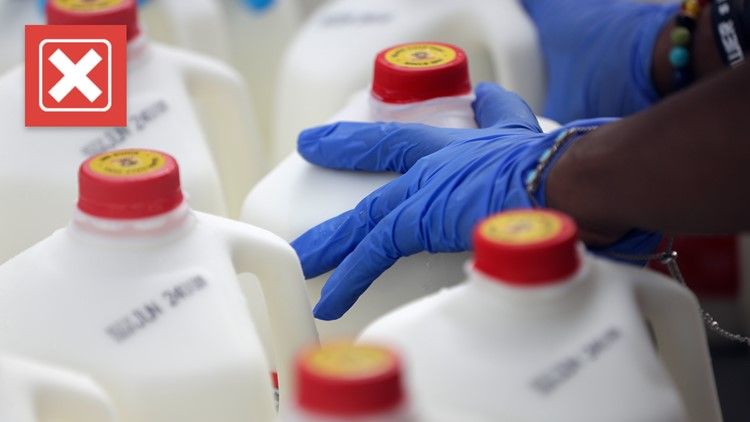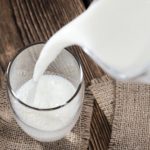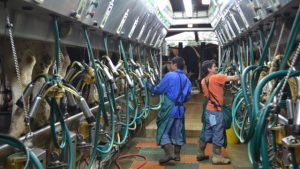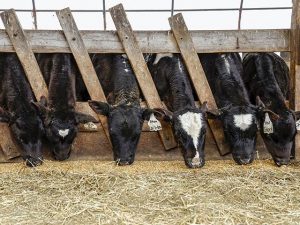
A Texas family from a suburb just outside of Dallas claimed on CNN that recent inflation was hitting them hard, particularly in the dairy aisle of their local grocery store.
They said the cost of a gallon of milk has gone from $1.99 to $2.79, an increase of 40%. But many social media users doubted that family’s experience was typical, claiming the price of milk hasn’t been below $2 for several decades.
THE QUESTION
Did the nationwide average price of milk go up 40% in the past year?
THE SOURCES
- Bureau of Labor Statistics (BLS)
- U.S. Department of Agriculture (USDA)
- Steve Reed, an economist at BLS
- Zach Myers, risk education manager for the Center for Dairy Excellence
THE ANSWER
No, milk prices have not jumped 40% in the past year. Nationwide, milk prices have increased by an average of 8%, and around Dallas, where the family that made the claim is located, milk prices have increased by about 21%.
WHAT WE FOUND
The U.S. Bureau of Labor Statistics (BLS) shows the average price of a gallon of whole milk was about $3.66 in Oct. 2021, an increase of 28 cents — or about 8% — from Oct. 2020, when it was $3.38.
The cheapest an average gallon of milk has been at any month in the past 10 years was in July 2018, when its average cost nationwide was $2.84.
Of course, milk prices aren’t the same everywhere, and they don’t always fluctuate at the same rate. The U.S. Department of Agriculture (USDA) includes data from specific metro areas in its breakdown of the average retail price of a gallon of whole milk. In the Dallas metro, an average gallon of milk was $3.29 in Oct. 2021, whereas in Oct. 2020 an average gallon of milk was $3.03. The price of milk did dip lower in November and December of 2020, hitting $2.72 in December. So the price of milk in Dallas has increased 57 cents since its low point in the past year, an increase of just under 21%.
The price of milk has definitely increased across the country over the past year, and the increase has been even greater around Dallas.
“I’ve been talking to the public about price change for a long time, and there is sort of, I think, a selective memory where people really notice price increases,” said Steve Reed, an economist at BLS. “And I think in some cases, perceived increases are a little bit larger than they actually are.”
Inflation isn’t the sole cause for the price increases people actually have seen in their local dairy aisles. Zach Myers, risk education manager for the Center for Dairy Excellence, said factors affecting the supply chain have as much of an impact as inflation in the recent price of milk.
“That [CNN] segment made it sound like inflation was solely responsible for driving the cost of that increase, and that’s simply not true,” Myers said. “I’m sure inflation has caused somewhat of an increase… But there’s a lot of things and like I said, supply and demand is a lot of what’s changing that milk price right now.”























